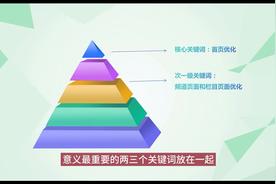
In today's digital age, a well-designed website is crucial for businesses and individuals alike to succeed online. An optimized website not only improves user experience but also enhances your brand image, increases visibility on search engines, and ultimately drives more conversions. In this Comprehensive guide, we will explore the key strategies and techniques to optimize your new Website Design for maximum impact.
1、Understand Your Audience
The first step in optimizing your website design is to understand your target audience. Conduct research to identify their preferences, needs, and behaviors. This will help you create a design that resonates with them and provides an enjoyable user experience.
2、Prioritize User Experience (UX)
A great website design focuses on providing an optimal user experience. Make sure your website is easy to navigate, with clear menus and intuitive page structures. Use responsive design to ensure your website looks and functions well on various devices, from desktops to smartphones. Additionally, ensure that your website loads quickly, as slow loading times can negatively impact user experience and bounce rates.
3、Simplify the Design
Simplicity is key when it comes to website design. Avoid cluttering your pages with too many Elements, which can overwhelm users and make it difficult for them to find the information they need. Use whitespace effectively to create a clean, uncluttered layout that guides users' attention to important content and calls-to-action.
4、Use a Consistent Visual Language
Establish a consistent visual language throughout your website by using a cohesive color scheme, typography, and imagery. This helps create a strong brand identity and makes it easier for users to recognize and remember your website. Additionally, ensure that your visual elements are high-quality and relevant to your content, as this can significantly impact the perceived value of your brand.
5、Focus on Content Structure and Readability
Organize your content in a logical and easy-to-follow structure, with clear headings and subheadings. Use short paragraphs, bullet points, and lists to break up large blocks of text and make your content more readable. Pay attention to font sizes, line heights, and contrast to ensure that your text is easy to read for all users, including those with visual impairments.
6、Implement Accessibility Best Practices
Make your website accessible to everyone, regardless of their abilities or disabilities. This includes using alt tags for images, providing captions and transcripts for videos, and ensuring that your website can be navigated with a keyboard alone. Implementing accessibility best practices not only benefits a wider range of users but also improves your website's overall usability and SEO performance.
7、Optimize for Search Engines (SEO)
A well-designed website should also be optimized for search engines to improve its visibility and attract more organic traffic. This includes using appropriate keywords in your content, meta descriptions, and title tags, as well as ensuring that your website follows best practices for technical SEO, such as using schema markup and optimizing your site speed.
8、Incorporate Calls-to-Action (CTAs)
Guide users through your website with clear and compelling calls-to-action (CTAs). These can be buttons, links, or banners that encourage users to take a specific action, such as subscribing to a newsletter, making a purchase, or contacting your business. Make sure your CTAs are easily visible and differentiated from the rest of your content to maximize their effectiveness.
9、Test and Iterate
Finally, it's essential to test your website design regularly and gather feedback from users. Use tools like Google Analytics and heat maps to track user behavior and identify areas for improvement. Continuously iterate on your design based on this feedback to ensure that your website remains optimized and effective in achieving your goals.
In conclusion, optimizing your website design requires a deep understanding of your audience, a focus on user experience, and attention to detail in every aspect of your design. By following the strategies outlined in this guide, you can create a website that engages your users, builds your brand, and drives success online. Remember to stay flexible and adapt to changes in user behavior and industry trends to keep your website design optimized for the long term.
评论列表 (0条)